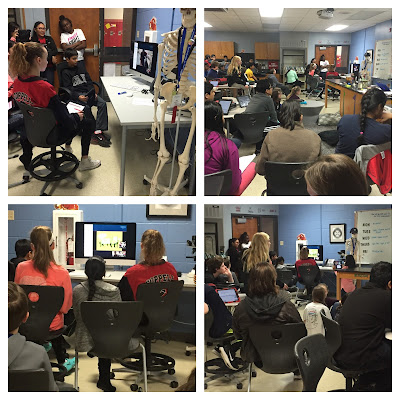Goal: For students to learn about endangered animals, conservation, and ecology in an engaging and entertaining way.
Overview: Students take a virtual journey around the world, game style, visiting 5 locations, which they have to identify based on clues. Once identified, they are given roadblocks to test their knowledge of the area, animals, plants, biomes, etc. They also will receive detours, which will allow them to create something to teach others based on what they have learned.
I have attempted to get students from the locations we are "visiting" to provide clues about their location. We are using
FlipGrid as a place to leave video messages for each other, since the time difference is too difficult for asynchronous communication. I am really excited for my kids to see the first of video messages left for us.
Game Play: Students are on teams for this journey. Several opportunities are provided at each stop for teams to gain points. I created a
leaderboard to track points during the adventure to help keep students motivated and competitive.
Product Created: Groups will create a digital travel journal, using
Book Creator, of their adventures to share with a local elementary school. We will take our iPads to the kindergarten - 2nd grade classrooms and have the 7th graders share their journey with the littles, teaching them about biomes, ecology, and endangered animals.
Our big picture goal is to have our kids study endangered animals around the world for a project we are doing for the Dallas Zoo. We are writing a multi-touch book on eight endangered animals to share their story. We hope to raise awareness regarding these endangered and threatened species and showcase the conservation efforts that the Dallas Zoo has in place. Many of the detours we are doing along the way provide an opportunity for students to create visuals for the book.

If you want to join the journey, you can follow along in our
iTunes U course, Life Science.
The section titled
Ecology will be built over the next few weeks, adding as we go through our journey. I am happy to share any of the files directly so email me if you want more information, or if you want to connect with our classes.








